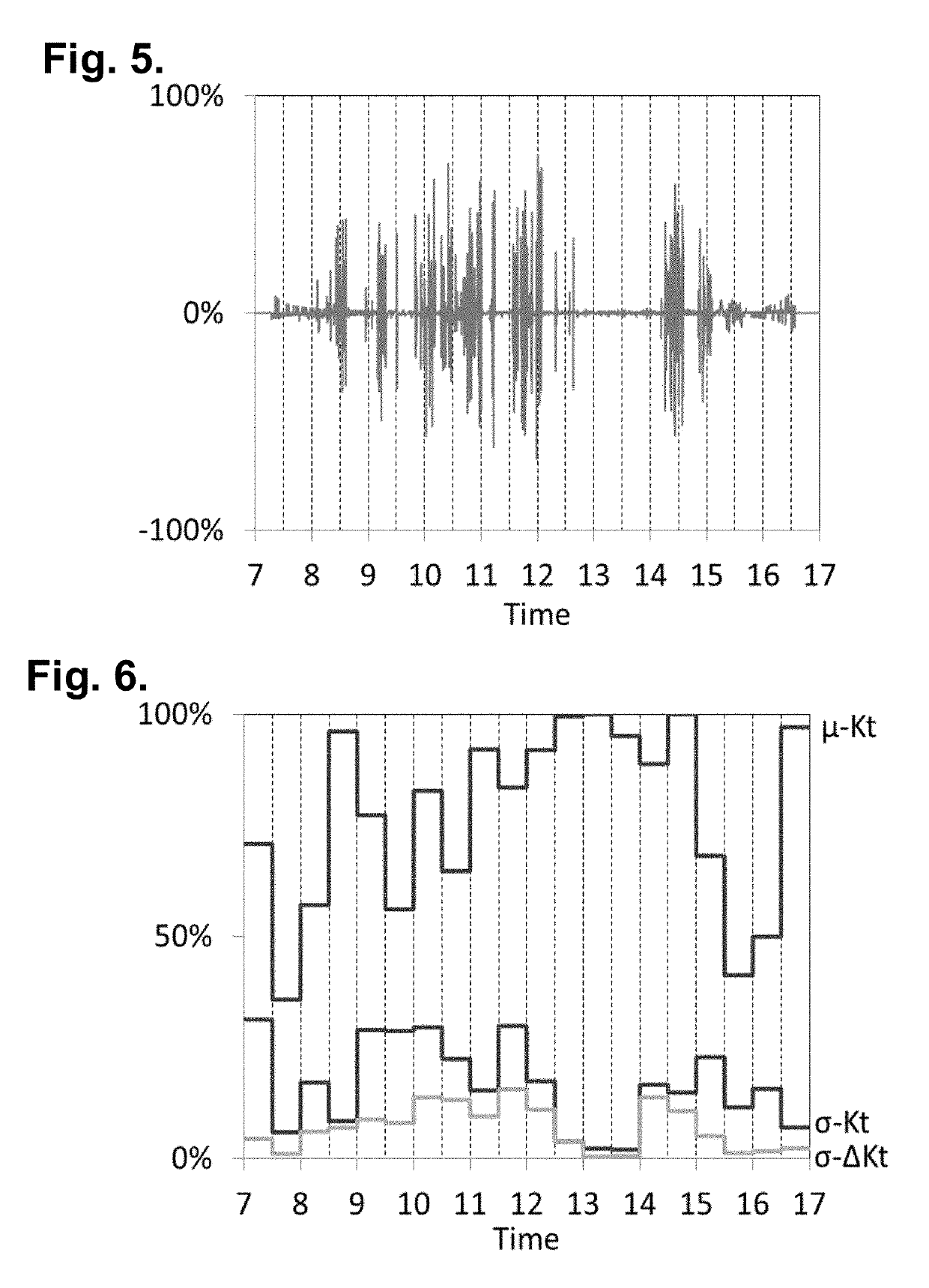Estimating photovoltaic energy through averaged irradiance observations with the aid of a digital computer
a photovoltaic energy and digital computer technology, applied in the field of photovoltaic power generation fleet planning and operation, can solve the problem of not always available normalized irradiation
- Summary
- Abstract
- Description
- Claims
- Application Information
AI Technical Summary
Benefits of technology
Problems solved by technology
Method used
Image
Examples
example
[0360]This section illustrates how to calculate A for the clearness index for a satellite pixel that covers a geographical surface area of 1 km by 1 km (total area of 1,000,000 m2), using a 60-second time interval, and 6 meter per second cloud speed. Equation (76) required that the correlation coefficient be of the form
[0361]exDArea.
The empirically derived result in Equation (64) can be rearranged and the appropriate substitutions made to show that the correlation coefficient of the clearness index equals
[0362]exp[(lnΔt-9.3)D1000CloudSpeed].
Multiply the exponent by
[0363]AreaArea,
so that the correlation coefficient equals
[0364]exp{[(lnΔt-9.3)Area1000CloudSpeed][DArea]}.
This expression is now in the correct form to apply Equation (85), where
[0365]x=(lnΔt-9.3)Area1000CloudSpeed.
Inserting the assumptions results in
[0366]x=(ln60-9.3)1,000,0001000×6=-0.86761,
which is applied to Equation (85). The result is that A equals 65 percent, that is, the variance of the...
PUM
 Login to View More
Login to View More Abstract
Description
Claims
Application Information
 Login to View More
Login to View More - R&D
- Intellectual Property
- Life Sciences
- Materials
- Tech Scout
- Unparalleled Data Quality
- Higher Quality Content
- 60% Fewer Hallucinations
Browse by: Latest US Patents, China's latest patents, Technical Efficacy Thesaurus, Application Domain, Technology Topic, Popular Technical Reports.
© 2025 PatSnap. All rights reserved.Legal|Privacy policy|Modern Slavery Act Transparency Statement|Sitemap|About US| Contact US: help@patsnap.com



